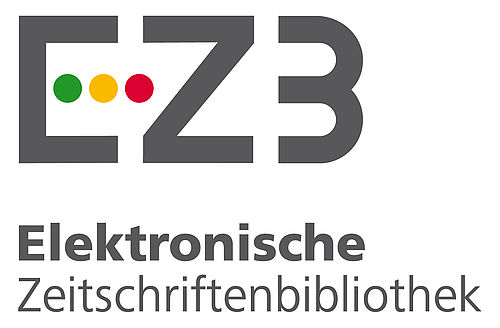Abstract
References
- Alkire, B. H., and Simon, J. E. 1995. Response of Midwestern peppermint (Mentha x piperita L.) and native spearmint (M. spicata L.) to rate and form of nitrogen fertilizer. In International Symposium on Medicinal and Aromatic Plants 426 (pp. 537-550).
- Baydar, H., 2016. Tıbbi Aromatik Bitkiler Bilimi ve Teknolojisi (Genişletilmiş 5. Baskı), SDÜ Yayın No: 51, p. 264. Isparta.
- Ceylan, A. 1983. Tıbbi Bitkiler II, Ege Üniversitesi Ziraat Fakültesi Yayınları, Yayın No: 481, İzmir.
- Court, W. A., Roy, R. C., Pocs, R., More, A. F., and White, P. H. 1993. Optimum Nitrogen Fertilizer Rate for Peppermint (Mentha piperita L.) in Ontario, Canada. Journal of Essential Oil Research, 5(6), 663-666.
- Demirezer, L.Ö, 2010. Bitkilerin Tıpta Kullanılması Konusundaki Sorumluluklarımız. Bitkilerle Tedavi Sempozyumu 5-6 Haziran 2010 Zeytinburnu/İstanbul Bildiri Kitabı, s: 87- 88.
- Demirez M, 2013. Nane‟nin Fitoterapi Açısından Değerlendirilmesi. Gazi Üniversitesi Sağlık Bilimleri Enstitüsü Farmakognozi Anabilim Dalı Fitoterapi Programı. Ankara
- Gezgin, D. 2006. Bitki Mitosları. Sel Yayıncılık, İstanbul İlisulu, 1992. Aromatik Bitki Nane. http://www.cine-tarim.com.tr/dergi/arsiv52/sektorel07.htm
- Karakaplan, N., 2017. Nane (Mentha Spicata) Bitkisinden Uçucu Yağ Eldesi için Optimum Koşulların Araştırılması. İnönü Üniversitesi Fen Bilimlkeri Enstitüsü. Malatya.
- Kokkini, S., 1983. Taxonomic studies in the genus Mentha in Greece. PhD Thesis. University of Thessalonniki, Thessaloniki., pp:171.
- Megep, 2016. Tohumundan Ve Meyvelerinden Yararlanılan Bitkiler. Millî Eğitim Bakanlığı. Ankara
- Munsi, P. S., 1990. Nitrogen and phosphorus nutrition response in Japanese mint cultivation. In International Symposium on Medicinal and Aromatic Plants, XXIII IHC 306 (pp. 436-443).
- Özgüven M. and Kirici S., 1999. Farklı Ekolojilerde Nane (Mentha) Türlerinin Verim ile Uçucu Yağ Oran ve Bileşenlerinin Araştırılması. Çukurova Üniversitesi, Ziraat Fakültesi, Tarla Bitkileri Anabilim Dalı, 01330 Adana-TÜRKİYE
- Piccaglia, R., and Marotti, M. 1993. Characterization of several aromatic plants grown in northern Italy. Flavour and Fragrance Journal, 8(2), 115-122.
- Tuğay, M. E., Kaya, N., Yılmaz, G., Telci, I., and Dönmez, E. 2000. Tokat ve çevresinde yaygın olarak bulunan bazı aromatik bitkilerin bitkisel ve teknolojik özellikleri. TÜBİTAK, Tarım ve Ormancılık Araştırma Grubu, Proje Kesin Sonuç Raporu (TOGTAG-1690).
- Yılmaz, K., 2018. Isparta koşullarında yetiştirilen Mentha piperita L. türüne ait klon ve çeşitlerin verim ve kalite özelliklerinin belirlenmesi. Doktora Tezi. Süleyman Demirel Üniversitesi Fen Bilimleri Enstitüsü Tarla Bitkileri Anabilim Dalı, Isparta.
Do Microbial Fertilizer Applications Affect the Yield and Essential Oil Ratio in Mint (Mentha piperita L.) Cultivars?
Abstract
Recently, excessive and unconscious uses of chemical fertilizer cause
significant hazards on natural resources and subsequently cause serious
environmental problems. As an alternative instead of chemical fertilizer,
microbial fertilizers are used for healthier soil and plant. The aim of this
study was to determine the effect of different doses of microbial fertilizers
on yield and essential oil ratio in Mint (Mentha
piperita L.) cultivars. The experiment was carried out in a pot according
to the randomized parcel design. The
study was carried out with three cultivars namely, Mentha piperita swiss, M.
piperita chocolate, M. piperita multimentha, four doses (control,
1, 1.5 and 2 doses) and three replicates. In the study; plant height (cm), fresh
herb yield (g/m2), drog herb yield (g/m2), drog leaf
yield (g/m2), essential oil ratio (%) and essential oil yield (L/m2)
were examined. Along with the study, Microbial fertilizers exhibited significant
effects on the parameters examined herein. The yield of fresh herb yield and
drog leaf yield were found between 1342.5-2001.1 g/m2, 160.9-228.0
g/m2 respectively and the essential oil ratio varied between
1.55-1.93% according to microbial fertilizer doses.
References
- Alkire, B. H., and Simon, J. E. 1995. Response of Midwestern peppermint (Mentha x piperita L.) and native spearmint (M. spicata L.) to rate and form of nitrogen fertilizer. In International Symposium on Medicinal and Aromatic Plants 426 (pp. 537-550).
- Baydar, H., 2016. Tıbbi Aromatik Bitkiler Bilimi ve Teknolojisi (Genişletilmiş 5. Baskı), SDÜ Yayın No: 51, p. 264. Isparta.
- Ceylan, A. 1983. Tıbbi Bitkiler II, Ege Üniversitesi Ziraat Fakültesi Yayınları, Yayın No: 481, İzmir.
- Court, W. A., Roy, R. C., Pocs, R., More, A. F., and White, P. H. 1993. Optimum Nitrogen Fertilizer Rate for Peppermint (Mentha piperita L.) in Ontario, Canada. Journal of Essential Oil Research, 5(6), 663-666.
- Demirezer, L.Ö, 2010. Bitkilerin Tıpta Kullanılması Konusundaki Sorumluluklarımız. Bitkilerle Tedavi Sempozyumu 5-6 Haziran 2010 Zeytinburnu/İstanbul Bildiri Kitabı, s: 87- 88.
- Demirez M, 2013. Nane‟nin Fitoterapi Açısından Değerlendirilmesi. Gazi Üniversitesi Sağlık Bilimleri Enstitüsü Farmakognozi Anabilim Dalı Fitoterapi Programı. Ankara
- Gezgin, D. 2006. Bitki Mitosları. Sel Yayıncılık, İstanbul İlisulu, 1992. Aromatik Bitki Nane. http://www.cine-tarim.com.tr/dergi/arsiv52/sektorel07.htm
- Karakaplan, N., 2017. Nane (Mentha Spicata) Bitkisinden Uçucu Yağ Eldesi için Optimum Koşulların Araştırılması. İnönü Üniversitesi Fen Bilimlkeri Enstitüsü. Malatya.
- Kokkini, S., 1983. Taxonomic studies in the genus Mentha in Greece. PhD Thesis. University of Thessalonniki, Thessaloniki., pp:171.
- Megep, 2016. Tohumundan Ve Meyvelerinden Yararlanılan Bitkiler. Millî Eğitim Bakanlığı. Ankara
- Munsi, P. S., 1990. Nitrogen and phosphorus nutrition response in Japanese mint cultivation. In International Symposium on Medicinal and Aromatic Plants, XXIII IHC 306 (pp. 436-443).
- Özgüven M. and Kirici S., 1999. Farklı Ekolojilerde Nane (Mentha) Türlerinin Verim ile Uçucu Yağ Oran ve Bileşenlerinin Araştırılması. Çukurova Üniversitesi, Ziraat Fakültesi, Tarla Bitkileri Anabilim Dalı, 01330 Adana-TÜRKİYE
- Piccaglia, R., and Marotti, M. 1993. Characterization of several aromatic plants grown in northern Italy. Flavour and Fragrance Journal, 8(2), 115-122.
- Tuğay, M. E., Kaya, N., Yılmaz, G., Telci, I., and Dönmez, E. 2000. Tokat ve çevresinde yaygın olarak bulunan bazı aromatik bitkilerin bitkisel ve teknolojik özellikleri. TÜBİTAK, Tarım ve Ormancılık Araştırma Grubu, Proje Kesin Sonuç Raporu (TOGTAG-1690).
- Yılmaz, K., 2018. Isparta koşullarında yetiştirilen Mentha piperita L. türüne ait klon ve çeşitlerin verim ve kalite özelliklerinin belirlenmesi. Doktora Tezi. Süleyman Demirel Üniversitesi Fen Bilimleri Enstitüsü Tarla Bitkileri Anabilim Dalı, Isparta.
Details
| Primary Language | English |
|---|---|
| Subjects | Agricultural Engineering |
| Journal Section | Research Article |
| Authors | |
| Publication Date | December 26, 2019 |
| Published in Issue | Year 2019 Volume: 2 Issue: 2 |
-------------------------------------------------------------------------------------------------------------------------------













-------------------------------------------------------------------------------------------------------------------------
 CUPMAP Journal is licensed under a Creative Commons Attribution-NonCommercial-NoDerivatives 4.0 International License.
CUPMAP Journal is licensed under a Creative Commons Attribution-NonCommercial-NoDerivatives 4.0 International License.
-----------------------------------------------------------------------------------------------------------------------------------------
This is an open access journal which means that all content is freely available without charge to the user or his/her institution. Users are allowed to read, download, copy, distribute, print, search, or link to the full texts of the articles, or use them for any other lawful purpose, without asking prior permission from the publisher or the author. This is in accordance with the BOAI definition of open access.
